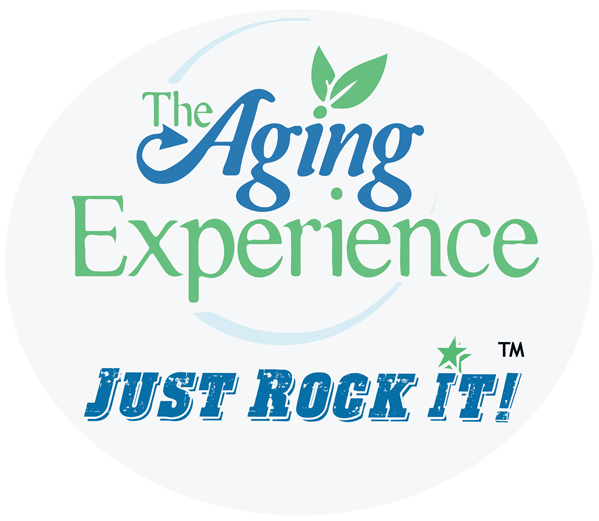Our Friday Song of the Week – I Second That Emotion
Our Friday Song of the Week – I Second That Emotion
Aging in Place – Charlotte Today Show
Aging in Place – Is it for Everyone?
Often as people age their biggest desire is to remain in their homes. But is that realistic for everyone? To age in place requires planning. The goal of aging in place is to help seniors live in the residence of their choice, for as long as they are able and get any help they need for as long as they can. It is about maintaining and/or improving quality of life. In order to do that, a good plan that focuses on your quality of life should be created as early as possible.
Chair Yoga Helps Your Osteoarthritis – Smilecast 43
Chair Yoga – Benefits Are Many
Researchers at Florida Atlantic University examined the effects of chair yoga on pain and physical function in older adults with osteoarthritis.
For the study, researchers randomly assigned 131 older adults with osteoarthritis to either the “Sit ‘N’ Fit Chair” program developed by Kristine Lee or a health education program. Participants attended 45-minute sessions twice a week for 8 weeks. Researchers measured pain, pain interference (how it affects one’s life), balance, gait speed, fatigue and functional ability, before, during and after the sessions.
Podcast: Play in new window | Download
Subscribe: Apple Podcasts | RSS
Despite Rumors, Senior Housing & Care Costs Are Not Spinning Out Of Control
Senior Housing and Care Costs Are Not Spinning Out Of Control
Ben Hanowell, researcher and data scientist for A Place for Mom
A Place for Mom, the nation’s largest senior living referral service, recently released its 2017 National Senior Living Cost Index. This study shows which metropolitan areas and care types have the fastest growing senior housing costs, and which cities are the most and least affordable. While the data on which cities are the most and least affordable is not surprising, what is surprising is that the cost growth for assisted living and memory care is increasing at a much slower speed than expected by the public.
Currently, there is widespread belief that health care costs are spiraling out of control and that senior housing and care costs are spiraling right along with it. However, the data paints a different picture. With the notable exception of prescription drugs, health care cost growth has actually slowed in recent years, and housing costs are growing even slower. Presently, senior living cost growth is comparable to the growth in housing rents, both of which are substantially slower than home prices, but senior housing cost is slowly starting to pick up momentum and we could see it reach the growth rate of other health care costs one day. So, while you don’t need to rush to your closest nursing home to guarantee the best prices, it is a good idea to keep an eye on the industry and not put off moving for too long.
If you are new to the idea of senior living, it is important to know that there are three main types: Independent Living, Assisted Living and Memory Care. Each one provides a different level of care for the senior. Independent Living is a community of seniors living in individual apartments with limited in-home assistance as needed and different amenities, like a meal plan or housekeeping. Assisted Living is a little more hands-on and designed for seniors who need daily assistance from a caregiver, usually including 24-hour caregiver access with medication management and a full meal and housekeeping plan. Memory Care is the most intensive and requires a specially trained staff and secure environment for seniors with moderate to advanced cognitive impairments. For each of these different living situations, the average growth in cost has been 1.8 percent, but in 2016 it jumped to 2.9 percent, which is around $100. Even with senior living cost growth accelerating across the U.S., there have been certain regions, especially in the South, that have seen growth slow.
Independent Living is the senior living type that is seeing the largest increase in growth. This is because all of the costs go to rent and not senior care, making it the most similar to the housing market which has seen a growth spike in recent years. According to Zillow Rent Index, annual rent growth hovered nationally from 2 to 5 percent between 2013 and 2016, similar to growth in senior living costs. The largest contributor to rising care costs, therefore, is actually the economic recovery the U.S. has experienced over the last few years. Assisted Living and Memory Care tend to be more resilient to large economic changes because there is a greater urgency for the consumer’s care needs and a greater portion of rent goes toward care instead of the living facility. Therefore their growth rates may be slower because of the slower growth rate of health care compared to that of the housing market.
In terms of which metros are going to be the most and least affordable, there are no surprises. Large coastal metros have much higher costs than metros in the South, Southwest and Midwest states. Within those metros there are also certain cities that are going to be more expensive than the average of the metro area. You can find more information about the most and least expensive metros and cities for each type of assisted living in the Senior Living Cost Index 2017 on A Place for Mom’s website, as well as other helpful tools to make the transition easier including an interactive map of housing costs in thousands of cities. As you start to look for the right senior living solution for yourself or your aging loved one, keep these resources in mind to help guide you through the complicated process.
Hearing Loss May Be Associated with Earlier Death! What Did You Say??

Hearing Loss and Earlier Death
About one-third of U.S. adults aged 65 to 74 have at least mild hearing loss, according to the U.S. National Institutes of Health. Almost half of people aged 75 and older have hearing loss. A new study suggest that hearing loss may be associated with earlier death. In a nationally representative sample of adults 70 years or older, moderate or more severe hearing impairment was associated with an increased risk of death, with greater impairment increasing the risk, compared to older adults without hearing impairment, according to a study published online by JAMA Otolaryngology-Head & Neck Surgery. Kevin J. Contrera, M.P.H., of the Johns Hopkins University School of Medicine, Baltimore, and colleagues studied 1,666 adults 70 years or older who had undergone audiometric testing. Compared with individuals without hearing loss, individuals with hearing loss were more likely to be older, male, white, former smokers, less educated, and have a history of cardiovascular disease and stroke. Moderate or more severe loss was associated with a 54 percent increased risk of death, and mild loss with a 27 percent increased risk of death, compared with individuals without hearing loss. ÛÏFuture studies are required to explore the basis of the association of HI with mortality and to determine whether therapies to rehabilitate hearing can reduce mortality,Û researchers noted.









